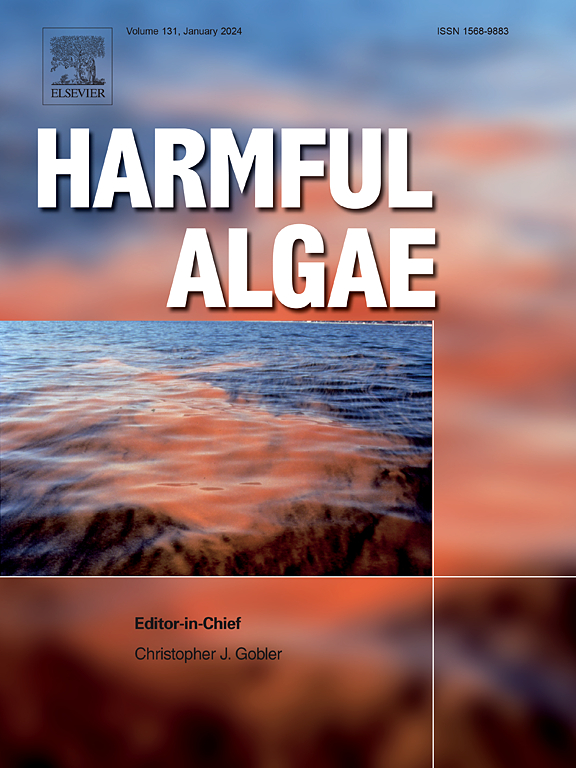Algal blooms in Lake Taihu: Earlier onset and extended duration
IF 4.5
1区 生物学
Q1 MARINE & FRESHWATER BIOLOGY
引用次数: 0
Abstract
Monitoring algal bloom phenology is crucial for managing water quality in eutrophic lakes, particularly under changing climate and environmental conditions. However, the lack of reliable long-term data has limited our understanding of bloom dynamics in inland lakes. Here, we analyzed the spatiotemporal characteristics of algal bloom phenology in Lake Taihu using daily MODIS data from 2000 to 2023. The floating algae index (FAI) and Bayesian land surface phenology (BLSP) model were applied to quantify bloom patterns and explore their climatic and environmental drivers. Over the past 24 years, algal bloom coverage in Lake Taihu averaged 19.88 %, with severe events occurring in 2007 and 2017, reaching frequencies of 9.54 % and 10.60 % and coverages of 42.92 % and 41.10 %, respectively. Bloom durations ranged from 60 to 90 days, typically starting between March and June and ending between July and December. Notably, since 2015, blooms have shown a tendency to start earlier, persist longer, and end later. Bloom phenology was primarily driven by water quality, with wind speed and cumulative evaporation also playing significant roles. These findings provide new insights into the driving mechanisms behind algal bloom phenology and serve as a scientific basis for developing effective lake ecological management strategies and water quality improvement initiatives.
太湖藻华:发生时间早,持续时间长
监测藻华物候对富营养化湖泊的水质管理至关重要,特别是在气候和环境条件不断变化的情况下。然而,缺乏可靠的长期数据限制了我们对内陆湖泊水华动态的理解。利用2000 - 2023年的MODIS逐日数据,分析了太湖水华物候的时空特征。应用浮藻指数(FAI)和贝叶斯陆地表面物候(BLSP)模型定量分析了藻华模式,并探讨了其气候和环境驱动因素。过去24年,太湖藻华平均覆盖率为19.88%,其中2007年和2017年发生过严重事件,频率分别为9.54%和10.60%,覆盖率分别为42.92%和41.10%。花期从60天到90天不等,通常在3月到6月之间开始,在7月到12月之间结束。值得注意的是,自2015年以来,花朵开始得更早,持续时间更长,结束得更晚。水华物候主要受水质驱动,风速和累积蒸发量也起重要作用。这些发现为研究藻华物候的驱动机制提供了新的见解,并为制定有效的湖泊生态管理策略和水质改善措施提供了科学依据。
本文章由计算机程序翻译,如有差异,请以英文原文为准。
求助全文
约1分钟内获得全文
求助全文
来源期刊

Harmful Algae
生物-海洋与淡水生物学
CiteScore
12.50
自引率
15.20%
发文量
122
审稿时长
7.5 months
期刊介绍:
This journal provides a forum to promote knowledge of harmful microalgae and macroalgae, including cyanobacteria, as well as monitoring, management and control of these organisms.
 求助内容:
求助内容: 应助结果提醒方式:
应助结果提醒方式:


